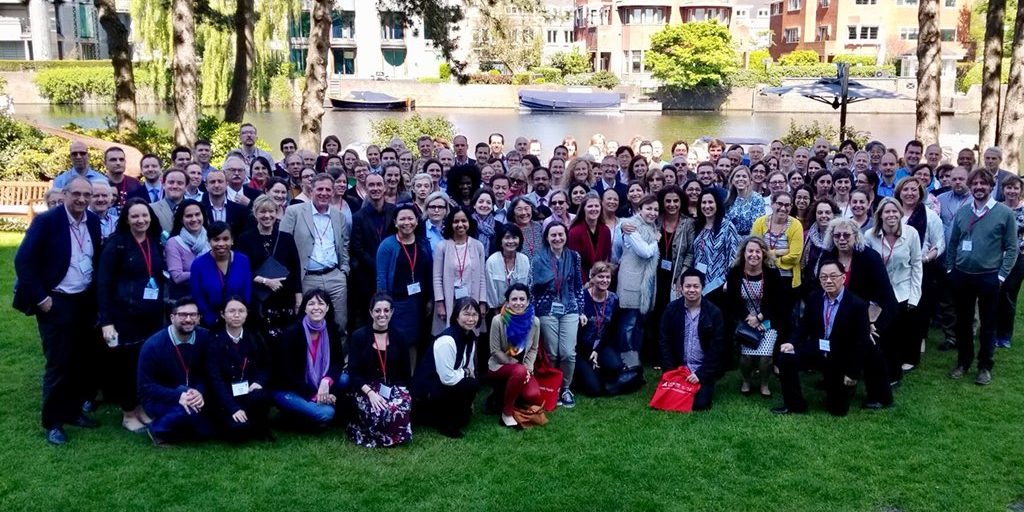Text by Lauriane Janssen
Tenth International Research Symposium on Marfan Syndrome
The 10th International Research Symposium on Marfan Syndrome and related disorders was held from May 3rd to 5th 2018 in Amsterdam, The Netherlands. More than 200 specialists and researcher of Marfan syndrome attended this 3 days meeting, where all presentations were a 10 min talk followed by 5 minutes questions. Needless to say that we have been overwhelmed with interesting information. Here are a few take home messages:
- A big part of the research is done on several types of Marfan mice (with different FBN1 modifications). Interestingly there are different ways to “rescue” the phenotypes observed in the marfan mice by deleting different genes. For example, Marfan mice deficient in the SKI gene have an improved elasticity of the tissues; Marfan mice deficient in NOS2 or MMP13 have a smaller aorta size compared to Marfan only mice and the list goes on. These mice studies open new paths for the development of new drugs for Marfan syndrome.
- On of the biggest interest in today’s research is to compare genotype (mutations) and phenotype (symptoms), in order to be able to predict the specific risks of a mutation/patient. The researchers are more and more talking about gene/mutation specific effects on the patient, for example they prefer to talk about SMAD3 specific mutations/phenotype instead of Loeys-Dietz syndrome phenotype. Thanks to the reduced pricing of sequencing more and more genes and specific mutations are identified everyday, and require the research centre to share the data to better evaluate if a mutation is benign (no effect) or deleterious (causing disease), by comparing many patients with a similar mutation.
- Several speakers discussed an increased arterial tortuosity in Marfan patients, mainly in the liver, kidneys and cerebral artery. Different quantification methods have been evaluated and a link between aortic dissection at diameters <50 mm and high tortuosity of the cerebral artery (h-VTI>=68) has been observed.
- Recently, the presence of cysts near the kidneys have been observed by MRI. The presence of kidney cysts seems to be linked to an increased aortic dissection risk, it will thus be interesting to follow how this new observation will be incorporated in the treatment scheme for aortic surgery.
- Several studies also mentioned the (early) presence of osteoarthritis in Marfan patients. This is mainly due to hyperlaxity of the joints and the softness of the tissues. It is nice to see that other topics than only cardiological topics are also under the radar.
- Fibrillin fragments have also been studied. Some time ago, a new blood test was developed allowing to evaluate the risk of aortic dissection by quantifying fibrillin fragments in the blood. During the conference, tests performed on mice were discussed, injecting different fibrillin fragments. Among other, it was shown on this model that the injection of a specific fibrillin fragment in a mouse model with osteoporosis helps to improve the strength of the bones.
- Interesting mice studies showed an increased risk of aortic dissection after birth for mice that were lactating versus mice separated of their pups. This suggests a role of the ocytocin released after birth in post-partum aortic dissection. But mice and human are still very different, and we cannot just tell all pregnant Marfan patients to stop breast feeding as many more studies are needed on the subject to identify the exact mechanism and causes.
This is of course only a very short summary of what has been said during the meeting. If you would like to read the abstract book, just drop me an email (chair@marfan.eu) and I will provide it to you.
Lauriane







